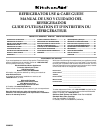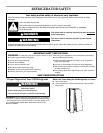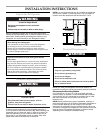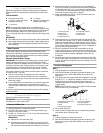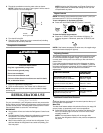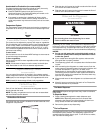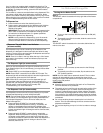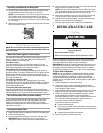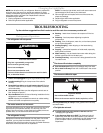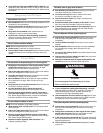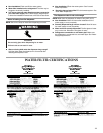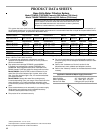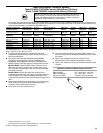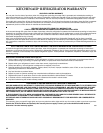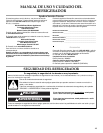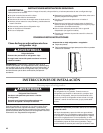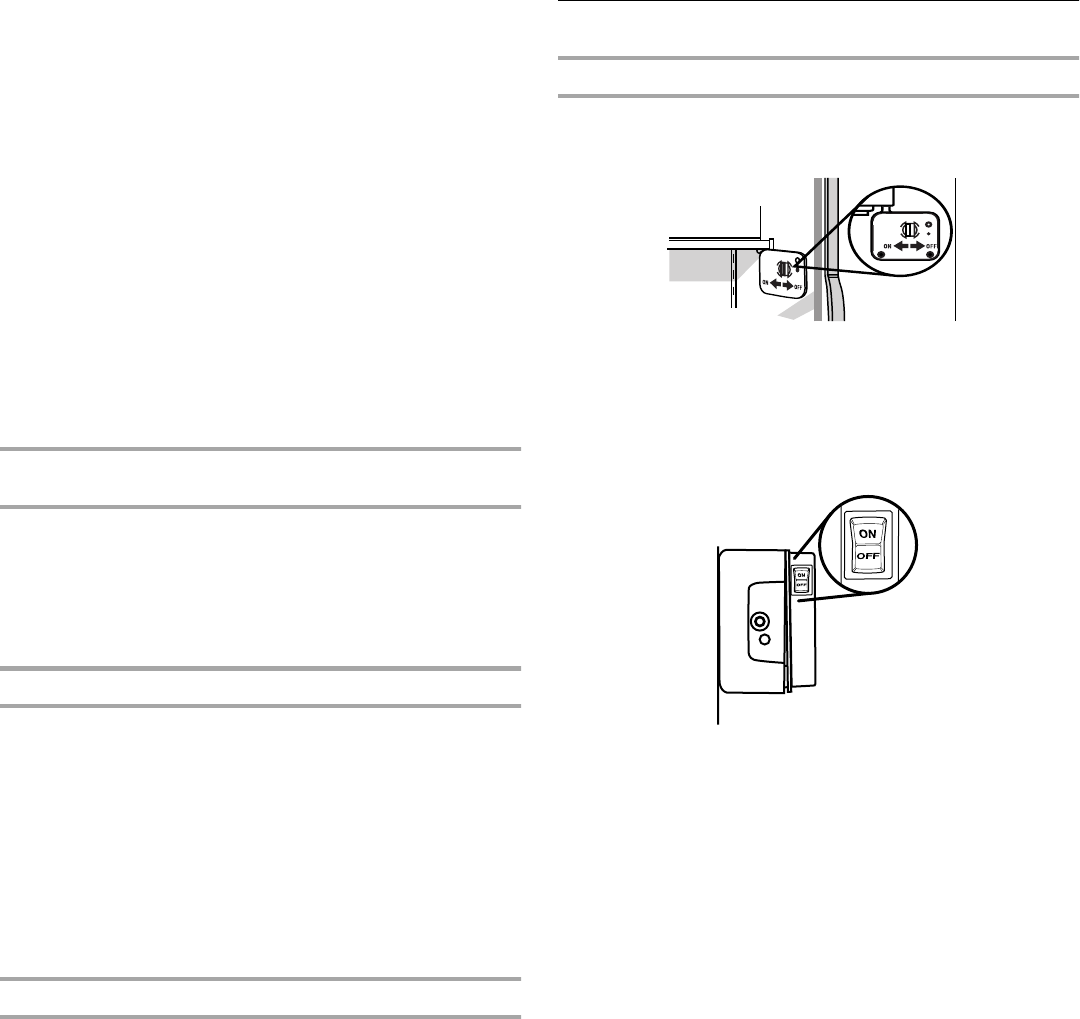
7
Your ice maker can produce both crushed and cubed ice. The
display screen reads CRUSHED or CUBED, indicating which type
is selected. To change the setting, press the ICE button before
dispensing ice.
For crushed ice, cubes are crushed before being dispensed. This
may cause a slight delay when dispensing crushed ice. Noise
from the ice crusher is normal, and pieces of ice may vary in size.
When changing from crushed to cubed, a few ounces of crushed
ice will be dispensed along with the first cubes.
To Dispense Ice:
1. Press the button to select the desired type of ice.
2. Press a sturdy glass against the ice dispenser pad. Hold the
glass close to the dispenser opening so ice does not fall
outside of the glass.
IMPORTANT: You do not need to apply a lot of pressure to the
pad in order to activate the ice dispenser. Pressing hard will
not make the ice dispense faster or in greater quantities.
3. Remove the glass to stop dispensing.
NOTE: Ice may continue to dispense for up to 10 seconds
after removing the glass from the pad. The dispenser may
continue to make noise for a few seconds after dispensing.
Dispenser Tray with Water Level Indicator
(on some models)
Your dispenser may include a small tray at the bottom of the
dispenser. It is designed to catch small spills and allow for easy
cleaning. The tray can be removed from the dispenser and carried
to the sink to be emptied or cleaned.
NOTE: There is no drain in the tray. When the tray is full of water
and needs to be emptied, a small red indicator pops up at the
back of the tray.
The Dispenser Light (on some models)
When you use the dispenser, the light will automatically turn on.
If you want the light to be on continuously, you may choose either
ON or AUTO.
ON: Press LIGHT to turn the dispenser light on.
AUTO: Press LIGHT a second time to select AUTO mode. The
dispenser light will automatically adjust to become brighter as the
room brightens, dimmer as the room darkens.
OFF: Press LIGHT a third time to turn the dispenser light off.
The dispenser lights are LEDs that can not be changed. If it
appears that your dispenser lights are not working, be sure that
the light sensor is not blocked (in AUTO mode). See
“Troubleshooting” for more information.
The Dispenser Lock (on some models)
Your dispenser can be turned off for easy cleaning or to prevent
unintentional dispensing by small children and pets.
NOTE: The lock feature does not shut off power to the product, to
the ice maker, or to the dispenser light. It simply deactivates the
ice and water dispensers. To turn off the ice maker, see “Ice
Maker & Storage Bin.”
■ Press and hold LOCKOUT for 3 seconds to lock the
dispenser. While the dispenser is locking, “LOCKING” will
appear on the display screen and the blue indicator light
around the LOCKOUT button will flash. When the dispenser is
locked, the indicator light will change to red for a few seconds,
then turn off.
■ Press and hold LOCKOUT a second time to unlock the
dispenser. While the dispenser is unlocking, “UNLOCKING”
will appear on the display screen and the red indicator light
around the LOCKOUT button will flash. When the dispenser is
unlocked, the indicator light will change to blue for a few
seconds, then turn off.
Ice Maker and Storage Bin
Turning the Ice Maker On/Off
Style 1:
The ON/OFF switch is located on the top right side of the freezer
compartment.
■ To turn on the ice maker, slide the control to the ON (left)
position.
■ To manually turn off the ice maker, slide the control to the
OFF (right) position.
Style 2:
The ON/OFF switch is located on the ice maker, behind the ice
maker cover door.
■ To turn on the ice maker, flip the switch to the ON (top)
position.
■ To manually turn off the ice maker, flip the switch to the
OFF (bottom) position.
NOTE: Your ice maker has an automatic shutoff. The ice maker
sensors will automatically stop ice production when the ice
storage bin is full or the freezer door is opened, but the control will
remain in the ON position.
REMEMBER:
■ Allow 24 hours to produce the first batch of ice. Discard the
first three batches of ice produced.
■ The quality of your ice will be only as good as the quality of the
water supplied to your ice maker. Avoid connecting the ice
maker to a softened water supply. Water softener chemicals
(such as salt) can damage parts of the ice maker and lead to
poor quality ice. If a softened water supply cannot be avoided,
make sure the water softener is operating properly and is well
maintained.
■ Do not use anything sharp to break up the ice in the bin or
bucket. This can cause damage to the ice container and the
dispenser mechanism.
■ Do not store anything on top of or in the ice maker or storage
bin.



